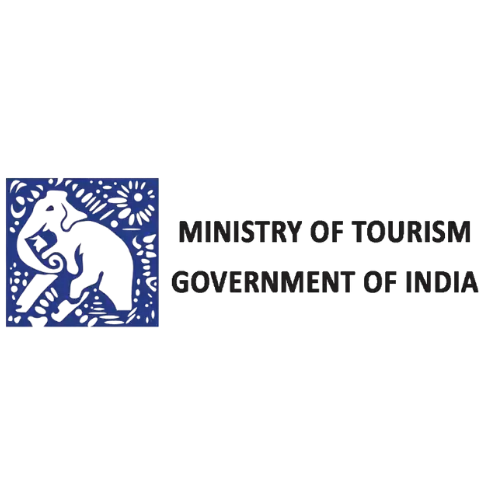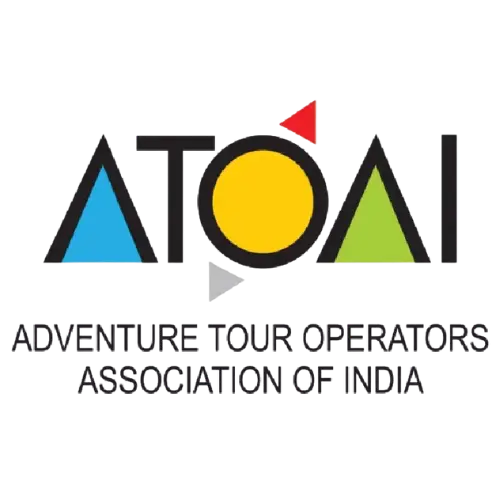Pantwari to Pantwari
Add Ons








Nag Tibba Trek – The Serpent’s Peak of the Garhwal Himalayas
Perched high in the Garhwal Himalayas, the Nag Tibba Trek is one of the most captivating short treks in Uttarakhand. Known as the “Serpent’s Peak,” Nag Tibba rises to an impressive 3,022 meters (9,915 ft), making it the highest peak in the lesser Himalayan range of the Tehri Garhwal region. For trekkers, this trail offers the best of the Himalayas in just a few days dense forests, meadows, ridge walks, wildlife, local culture, and stunning mountain views.
Nag Tibba is more than just a trek; it’s an immersion into the natural and cultural wealth of Uttarakhand. It is where mythology meets wilderness, where oak forests hide mountain wildlife, and where every clearing reveals a fresh perspective of the mighty Himalayas.
The Mythical Serpent’s Peak
Nag Tibba translates to “Abode of the Serpent God.” According to local legends, villagers once believed that Nag Devta (the serpent deity) protected their cattle from snake bites, and the peak became a sacred site. Even today, you’ll find small shrines dedicated to Nag Devta near the summit, where locals offer prayers before important journeys or agricultural seasons.
This spiritual essence gives Nag Tibba a unique character trekking here feels not only like an adventure but also like walking through a sacred space, guarded by nature and blessed by mythology.
The Trail – A Journey Through Changing Landscapes
The charm of the Nag Tibba trek lies in how much variety it packs into a short span. From the very first step, you experience dramatic shifts in landscape that many treks offer only over longer durations.
- The lower trail begins in quaint Himalayan villages with terraced fields and stone houses.
- The path quickly winds into oak, deodar, and rhododendron forests, where the air smells of pine and the ground is soft with fallen leaves.
- Higher up, the forest gives way to open meadows and ridge walks, with sweeping views of the surrounding valleys.
- Finally, as you approach the summit, the forest thins out, and the terrain opens into alpine clearings with uninterrupted Himalayan vistas.
This constant change in scenery keeps the trek engaging, making it perfect for both beginners and seasoned trekkers who enjoy diversity in terrain.
Flora – A Walk Through Himalayan Forests
Nag Tibba is a treasure trove of Himalayan flora. The trail winds through oak, rhododendron, deodar, and pine forests, each offering a different atmosphere.
- Oak forests dominate the lower stretches, their ancient trunks covered in moss and lichens.
- In spring, rhododendron trees burst into bloom, painting the forest with red and pink flowers.
- Deodar and pine trees rise tall and straight, their canopies forming cool, shaded tunnels that feel like nature’s own cathedral.
- Wild herbs, alpine grasses, and seasonal flowers add splashes of color to the meadows.
The beauty of these forests is not only visual; the crisp scent of pine and the earthy aroma of oak leaves create a refreshing sensory experience.
Fauna – The Wild Companions of the Trail
Nag Tibba lies within a rich ecological zone, home to diverse Himalayan wildlife. Trekkers often spot:
- Himalayan langurs swinging gracefully from oak branches.
- Barking deer darting through the undergrowth.
- Rare birds like the Himalayan monal (the state bird of Uttarakhand), koklass pheasant, and woodpeckers brightening the forests with their calls.
- In winter, footprints in the snow sometimes reveal the silent presence of foxes or leopards moving at night.
Though sightings of big mammals are rare, the feeling that you’re walking through the territory of so many creatures adds a sense of mystery to the trek.
Campsites & Clearings – Nights Under the Stars
One of the highlights of the Nag Tibba trek is camping in the forest clearings. Popular sites like Nag Tibba base camp or Kathian open into wide meadows ringed by dense trees.
At night, the skies here are spectacular millions of stars, the Milky Way arcing overhead, and the silhouettes of trees standing tall against the starlight. Sitting around a campfire, sharing stories with fellow trekkers, and gazing at the infinite Himalayan sky is an experience that stays with you long after the trek ends.
In winter, snow transforms these campsites into magical white wonderlands, with tents pitched on fresh powder and every tree branch draped in snow.
The Summit Experience – A Himalayan Panorama
At 9,915 ft, the Nag Tibba summit offers a view that rivals many higher Himalayan treks. From here, the horizon opens into a sweeping panorama of Garhwal and Himachal peaks.
- To the northeast, the snow-draped giants of Swargarohini, Bandarpoonch, Kala Nag, and Gangotri rise proudly.
- To the north, the Kedarnath peak gleams in the distance.
- To the west, the Doons and foothills stretch endlessly, fading into the plains.
Standing at the summit, you feel both small and infinite cradled by mountains yet soaring in spirit. The shrine of Nag Devta here adds a cultural and spiritual touch, reminding trekkers that this peak is as sacred as it is scenic.
Villages & Culture Along the Trail
Nag Tibba isn’t just about wilderness it’s also about connecting with Himalayan culture. The trail begins in villages where life still flows with ancient rhythms.
- Traditional Garhwali homes built of stone and wood line the paths.
- Terraced fields grow wheat, barley, and seasonal vegetables.
- Villagers often greet trekkers warmly, sharing stories or guiding directions.
This cultural immersion gives Nag Tibba a human warmth that complements its natural beauty. It’s a reminder that the Himalayas are not just mountains they are also home to people who live in deep harmony with nature.
Nag Tibba in Winter – A Snowy Paradise
Though every season has its charm, winter brings out the most magical side of Nag Tibba. By late December, the trail is usually covered in snow, transforming the forests and meadows into a sparkling white wonderland.
Walking through silent snow-laden forests, camping on fresh snow at Nag Tibba base, and watching the sunrise from a snow-draped summit is an experience that feels straight out of a fairytale.
The beauty of Nag Tibba in winter is that it offers the thrill of a snow trek without the extreme altitude or risks of longer expeditions making it perfect for those who want a taste of Himalayan winter in a short, safe format.
Why Nag Tibba is Special
What makes Nag Tibba unique is how much it offers in such a compact trail:
- The mythological significance of the Serpent’s Peak.
- Forests, meadows, ridges, and snow, all within a few days.
- Wildlife and birdlife that bring the forests alive.
- Cultural encounters with mountain villages.
- A summit view of Himalayan giants that feels larger than life.
In just a short trek, Nag Tibba gives you a complete Himalayan experience nature, culture, adventure, and spirituality, all rolled into one journey.
Final Words – A Short Trek with a Big Heart
The Nag Tibba Trek may be short in duration, but it is big in experience. From the forests that whisper with legends, to the meadows that shine under starlight, to the summit that unveils the grandeur of the Himalayas Nag Tibba offers moments of wonder at every step.
For beginners, it is the perfect entry into trekking. For experienced trekkers, it is a refreshing getaway. For everyone, it is a reminder of why the Himalayas are eternal, sacred, and unforgettable.
When you walk on the Serpent’s Peak, you don’t just conquer a summit you embrace the Himalayas in all their beauty and spirit.
Nag Tibba Trek – Short Itinerary
Day 1: Dehradun → Pantwari → Camp 1
- Altitude: Pantwari – 1,450 m / 4,700 ft | Camp 1 – 2,300 m / 7,700 ft
- Drive Distance: 90 km | 4–5 hrs
- Trek Distance: 4 km | 3 hrs
Day 2: Camp 1 → Nag Tibba Summit → Pantwari → Dehradun
- Altitude: Nag Tibba Top – 3,000 m / 9,900 ft
- Trek Distance: 12 km | 10–11 hrs
- Drive Distance: 90 km | 5–6 hrs
Highlights:
- 5% GST will be applicable on Trek Cost and Add-on
- Services Sankri to Sankri.
- Meeting Point( Pickup/ Drop Point ):Prince Chowk, Dehradun
(If transportation opted from Tripophilia) - Reporting Time: 6:00 am
- Drop Time: 6:30 pm to 7:30 pm (Timings are subject to change based on weather and road conditions).
- Please reach Dehradun a day before to avoid any delays.
Detailed Day-by-Day Itinerary
Day 1: Drive from Dehradun to Pantwari & Trek to Camp 1
Your adventure begins with a morning drive from Dehradun to Pantwari village, the traditional starting point of the Nag Tibba trek. The road winds through Mussoorie’s hill slopes, pine forests, and terraced fields before reaching Pantwari at 1,450 m (4,700 ft).
From here, the trek begins with a steady climb through mixed forests of oak, rhododendron, and deodar. Along the way, you’ll pass terraced farmlands, shepherd huts, and occasional clearings that reveal views of nearby villages.
After about 3 hours of trekking (4 km), you’ll reach Camp 1 at 2,300 m (7,700 ft). This beautiful campsite is set in a forest clearing, offering open skies and serene Himalayan vibes. Evenings here are magical warm campfires, starry skies, and the cool mountain air set the tone for the trek ahead.
Day 2: Trek from Camp 1 to Nag Tibba Top & Return to Pantwari → Drive to Dehradun
Wake up early for the summit day. The trail ascends gradually from Camp 1, winding deeper into dense oak and rhododendron forests. As you climb higher, the forest begins to thin, and the path opens up to meadows and ridge walks.
Finally, after about 6–7 km of trekking, you’ll reach the Nag Tibba summit at 3,000 m (9,900 ft). From here, the view is breathtaking:
- To the northeast rise the snowy peaks of Swargarohini, Bandarpoonch, Kala Nag, and Gangotri.
- To the north, the Kedarnath and Doon valleys spread out below.
- On clear days, the Trishul and Nanda Devi ranges can also be spotted in the distance.
The summit also has a small Nag Devta shrine, where locals still come to offer prayers. It adds a spiritual charm to the panoramic Himalayan backdrop.
After spending time at the top, begin your descent back to Pantwari (12 km round trip, 10–11 hrs in total). Once you reach Pantwari, your vehicle will be waiting to drive you back to Dehradun (90 km | 5–6 hrs).
By evening, you’ll arrive with a heart full of Himalayan memories forests, meadows, and summit views that make Nag Tibba one of the most rewarding short treks in Uttarakhand.
Nag Tibba Trek Fitness Preparation Plan
Max Altitude: 3,000 m / 9,900 ft | Grade: Easy
The Nag Tibba Trek is one of the most beginner-friendly Himalayan treks. While it can be done without prior trekking experience, preparing your body in advance will make the climb smoother and more enjoyable. Trekoholics recommends beginning 6–8 weeks before departure with light strength, stamina, and core training.
Day-Wise Fitness Plan
Day 1, 3, and 5 – Strength & Uphill Training
Uphill Training (Stair Climbing):
- 2 Months Prior: 10 min (5 min continuous × 2 sets, 1 min rest)
- 1 Month Prior: 20 min (10 min continuous × 2 sets, 1 min rest)
Push-Ups:
- 2 Months Prior: 8 × 1 set (8 reps total)
- 1 Month Prior: 10 × 2 sets (20 reps total)
Squats:
- 2 Months Prior: 8 × 1 set (8 reps total)
- 1 Month Prior: 12 × 2 sets (24 reps total)
Day 2, 4, and 6 – Endurance & Core Training
Jogging / Brisk Walking:
- 2 Months Prior: 15 min (cover ~1.5 km)
- 1 Month Prior: 20–25 min (cover ~2.5–3 km)
Cycling (Optional):
- 2 Months Prior: 15 min (cover ~2 km)
- 1 Month Prior: 20 min (cover ~5 km)
Crunches:
- 2 Months Prior: 10 × 1 set (10 reps total)
- 1 Month Prior: 12 × 2 sets (24 reps total)
Day 7 – Rest & Recovery
Take one day off each week to rest your body and avoid fatigue. Recovery is as important as training to ensure you feel light and energetic during the trek.
Why This Matters for Nag Tibba
Stamina: Builds endurance for 4–5 hrs of trekking per day covering 4–6 km.
Strength: Prepares your legs & shoulders for uneven trails and carrying a small backpack.
Core Stability: Improves balance while walking on steep or rocky paths.
Confidence: Even basic fitness ensures you’ll enjoy the summit climb without unnecessary exhaustion.
💡 While Nag Tibba is shorter and easier than Kedarkantha, a light fitness routine ensures you get the most out of the trek whether it’s enjoying the forest trail, camping under the stars, or reaching the summit for Himalayan views with comfort and joy.

Essential Things to Carry for Kedarkantha Trek
Backpack & Bags
- Backpack (40–50L): Waterproof, lightweight, with hip/shoulder support.
- Daypack (10–20L): For daily essentials if main bag is offloaded.
- Rain Cover / Poncho: Protects both body and backpack.
Shoes & Socks
- Trekking Shoes: Good grip, ankle support, water-resistant (e.g., Decathlon Trek/MH series).
- Socks: 3–4 pairs sports socks + 2–3 pairs woolen/synthetic socks.
Clothing
- Base Layer: 3–5 dry-fit full-sleeve T-shirts or Shirts (collared preferred for sun protection).
- Insulation Layer: 1 padded jacket + 1–2 thin sweaters/fleece. Avoid bulky wool.
- Trek Pants: 2–3 pairs quick-dry/stretchable trousers (avoid jeans/cotton).
- Thermal Innerwear: Optional but recommended for high altitude nights.
Accessories
- Caps: Sun cap + woolen cap/Balaclava.
- Glasses: UV-protected sunglasses (snow protection).
- Headlamp: With wide coverage (keep hands free).
- Trekking Poles: Pair preferred for better balance & reduced fatigue.
Personal Essentials
- Cutlery: Lightweight steel (plate, mug, spoon).
- Water Bottles: Two 1L bottles (carry 1 thermos for hot water in winters).
- Toiletries Kit: Toothbrush, paste, moisturizer, facewash, soap, toilet roll, sanitizer, small towel.
- Women: Sanitary pads/menstrual cup + disposal bags.
Medical Kit (Recommended)
- Diamox (AMS prevention)
- Dolo 650 (fever)
- Avomine (motion sickness)
- Avil 25mg (allergies)
- Combiflam (pain relief)
- Disprin (headache)
- Digene (acidity)
- Norflox TZ & Lomofen (diarrhea)
- ORS sachets
- Omez / Rantadine (antacids)
- Crepe bandage (3–5m)
- Gauze & cotton roll
- Band-aids (various sizes)
- Betadine / antiseptic cream
- Moov / Volini spray (aches & sprains)
- Knee caps (if prone to strain)
- Hot water bag (for winter treks)
Cancellation Charges & Refund Options
1. Cancellations made 25+ days before trek start date
- Refund Options:
- 5% deduction of trek fee, balance refunded in cash, OR
- 100% trek voucher (valid for any trek within 1 year), OR
- Transfer booking to a friend (any trek, any date).
2. Cancellations made 15–24 days before trek start date
- Refund Options:
- 30% deduction of trek fee, balance refunded in cash, OR
- 100% trek voucher (valid for the same trek within 1 year), OR
- 85% trek voucher (valid for any trek within 1 year), OR
- Transfer booking to a friend (same trek, any date).
3. Cancellations made 10–14 days before trek start date
- Refund Options:
- 50% deduction of trek fee, balance refunded in cash, OR
- 80% trek voucher (valid for the same trek within 1 year), OR
- 70% trek voucher (valid for any trek within 1 year), OR
- Option to rebook the same trek in the same season with another batch, OR
- Transfer booking to a friend (same trek, any date).
4. Cancellations made less than 9 days before trek start date
- Refund Options:
- No cash refund, OR
- 20% trek voucher (valid for the same trek within 1 year), OR
- 10% trek voucher (valid for any trek within 1 year), OR
- Transfer booking to a friend (same trek, same date only).
Special Emergency Cancellation Policy
In cases of genuine emergencies, even cancellations made 1 day prior to trek start are eligible for:
- 90% cash refund + 10% voucher (valid for 1 year, any trek in India)
Applicable only in the following cases (with valid proof):
- Death in immediate family (parents, spouse, children, siblings).
- Hospitalization of the participant (minimum 48 hours).
- Fracture (arm/leg) within 7 days before trek start.
Important Terms & Conditions
- Change of trek batch is subject to seat availability.
- Transfer of booking to a friend is allowed only if they meet the mandatory eligibility criteria.
- Trekoholics reserves the right to amend or cancel these policies without prior notice.
Booking & Payment Terms
- Verify all booking details (dates, documents, participant info) at the time of reservation.
- Payments must be completed within the specified timeline to confirm a seat.
- Cash refunds apply only to payments made in cash. Payments made via voucher, discount, promo code, or non-cash methods are non-refundable in cash.
- Refunds (if applicable) will be processed within 15–30 working days.
Voucher Terms
- Vouchers are non-transferable and cannot be combined with other offers.
- Valid only for treks booked directly with Trekoholics in India.
- Must be redeemed using the registered participant’s email ID or phone number.
- All standard trek booking terms also apply to vouchers.
Itinerary Modifications
- Trekoholics may modify, shorten, or cancel a trek due to weather conditions, transport delays, health emergencies, or other operational reasons.
If Trekoholics cancels before trek start:
- You may select an alternate trek/date, OR
- Accept a trek voucher valid for 1 year, OR
- Transfer booking to another trek (paying any price difference).
If a trek is abandoned after it begins, no refund or voucher will be issued.
Force Majeure Clause
Trekoholics will not be held liable for cancellations or changes caused by factors beyond its control, including but not limited to:
- Natural calamities (landslides, earthquakes, storms, heavy snowfall/rain).
- Strikes, curfews, war, pandemics, government restrictions.
- Road blockages, trail closures, or permit withdrawal by authorities.
Inclusions & Exclusions – Bali Pass Trek
✅ Inclusions
Accommodation
- Comfortable camping as per the itinerary (twin/tripel share basis).
Meals
- All meals (vegetarian + eggs) from Day 1 Lunch to Day 2 Lunch.
- Nutritious meals prepared by an experienced trek cook.
Support Team
- Base Camp Manager – manages coordination, communication & emergencies.
- Certified Trek Leaders – trained in mountaineering and first aid.
- High-Altitude Chef – ensures healthy meals during the trek.
- Experienced Local Guides – number depends on group size.
- Support Staff – for smooth operations and logistics.
Trek Equipment
- Sleeping bags, mattresses, and utensils.
- All-weather trekking tents (2/3 sharing), kitchen tent, dining tent, toilet tent.
- Camping stools, walkie-talkies for coordination.
- Technical gear: ropes, helmets, ice axes, harnesses, gaiters, and microspikes (as required).
First Aid & Safety
- Complete medical kit with oxygen cylinders, stretcher, oximeter, BP monitor & stethoscope.
Transportation (as per itinerary)
- Dehradun ↔ Pantwari (Day 1 & Day 2) if booked through Trekoholics add-on.
- Cloakroom facility at Dehradun.
- Mules/porters for carrying common/group equipment.
Permits & Documentation
- All required trek permits and forest entry fees (for Indian nationals).
Certification
- Trek Completion Certificate from Trekoholics after successful completion.
❌ Exclusions
- Trek insurance for Indian nationals/Non-Indian nationals (including NRI/OCI cardholders).
- Meals during transit (before reaching Sankri and after leaving Sankri).
- Personal expenses (souvenirs, laundry, snacks, etc.).
- Mule/porter service for personal luggage (available at extra cost).
- Emergency evacuation, hospitalization, or medical expenses.
- Additional costs due to unforeseen circumstances like:
- Natural calamities, landslides, or road blockages.
- Vehicle breakdowns or delays.
- Government restrictions or permit withdrawal.
- Anything not specifically mentioned under the “Inclusions” list.
Here is what trekkers have to say about their experience at Nag Tibba Trek
Available dates
Click on available dates to Register
- What the colours mean
- Available:Registration is on.
- Full:Indicates the group is full. No further slots are likely. A full group has 18 members.
Dates not suiting you? Click here to customize your trip.






